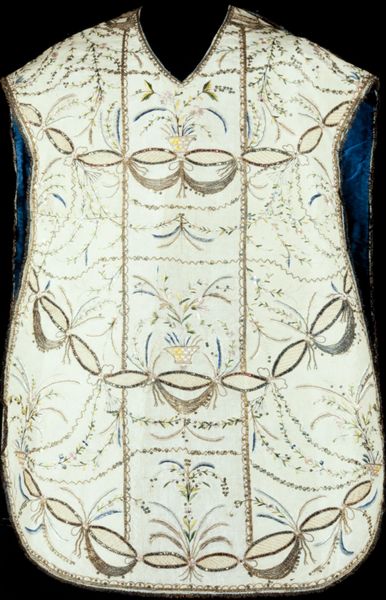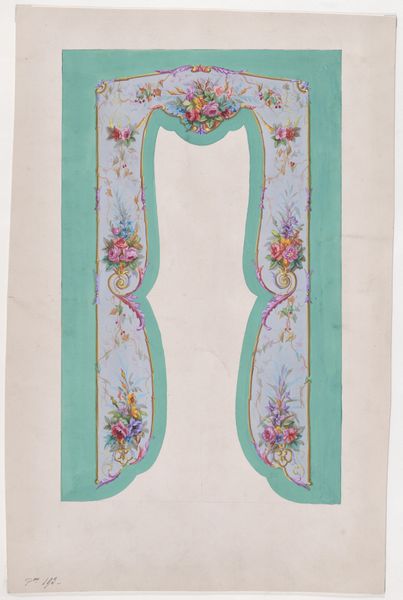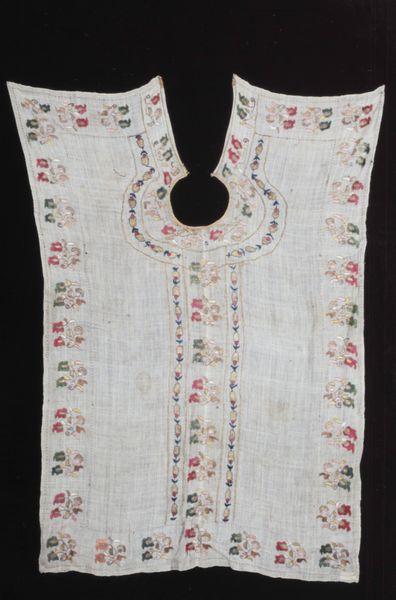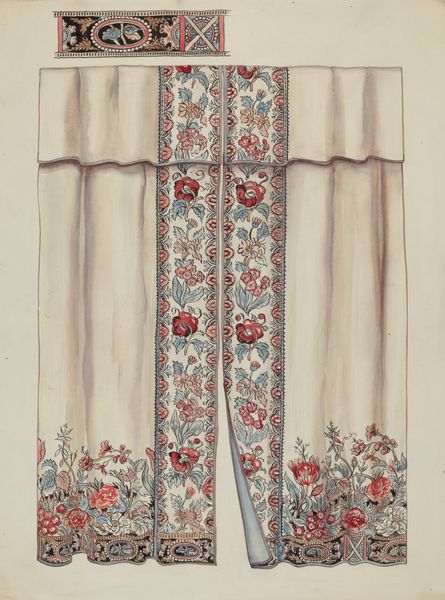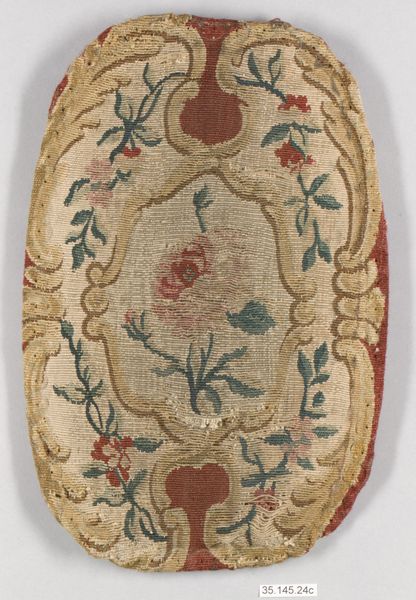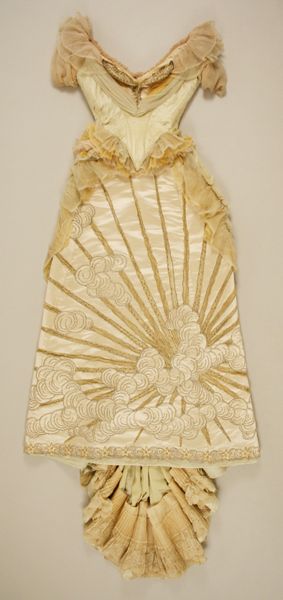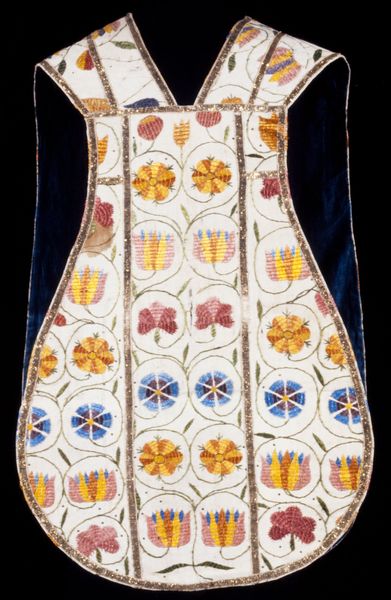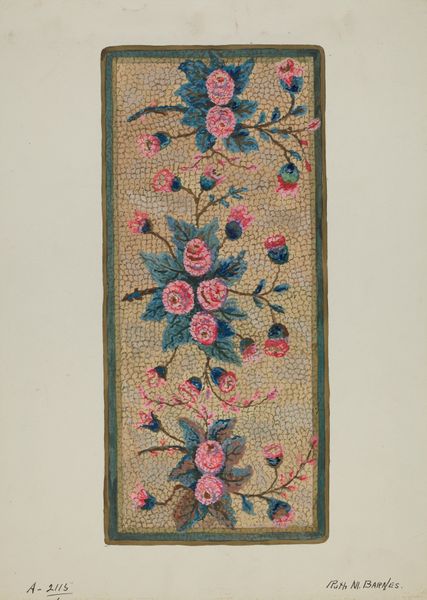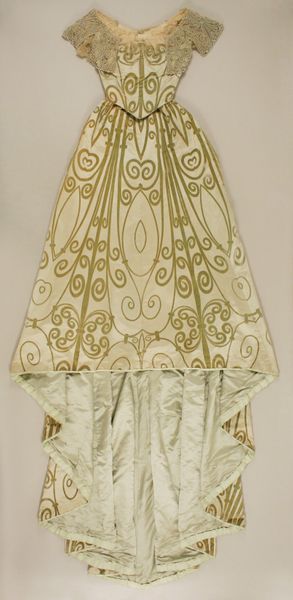
textile
#
pattern
#
textile
#
decorative-art
#
rococo
Dimensions: 16 3/16 × 10 in. (41.1 × 25.4 cm)
Copyright: Public Domain
Editor: We’re looking at an Embroidered Pocket from around the 18th century, created by an anonymous artist. It’s a beautiful textile piece in the collection of the Minneapolis Institute of Art. The detail is striking! It makes me think about a quiet, domestic world. What speaks to you when you look at this, say, besides the obvious fact that people once carried their worldly goods in them? Curator: Pockets, you see, were subversive acts! For centuries, women were literally kept out of pocket—denied places for their possessions, and by extension, their secrets. But, yes, it's more than mere practicality. Look at that sinuous, almost playful Rococo design. Isn't there a conversation here, a silent dialogue between constraint and freedom, the expected and the wildly individual? See the overall pattern beneath the flowers? That’s a meandering trail, almost like following a thought as it twists and turns. Editor: I hadn't thought of it that way, about women being denied literal pockets! It does change the perspective. So the floral design on top - would the specific flower choices have any symbolic meaning at the time? Curator: Almost certainly. Embroidery was a language, particularly for women. While we can’t say with certainty which bloom this particular stitcher had in mind, it is quite reasonable to assume these blooms represent love, prosperity or even secrets, transforming everyday object into a powerful expression of identity and, yes, even resistance. Do you feel a certain warmth when you examine it closely? I do. It's like a little echo from a life fully lived, one stitch at a time. Editor: That's lovely. Now I can see the piece less as a simple object and more as a deeply personal artifact and statement. Curator: Exactly. And perhaps, the most valuable skill of the artist is to allow you that deeply intimate reading.
Comments
minneapolisinstituteofart about 2 years ago
⋮
In the 1700s, European women wore pockets as a separate accessory attached to their waists, beneath voluminous skirts and petticoats. These accessories were generously sized – large enough to stash a container of smelling salts, a small bottle of perfume, a clutch of love letters, a portable almanac, perhaps even a pocket microscope. Women’s pockets were elaborately embroidered, despite the fact that they were seen only by the wearer and her intimates. The meandering yellow stitches on this pocket were common in the early 1700s. They were inspired by traditional embroidery from Bengal that featured naturally yellow wild silk on a cream fabric ground. When English tradesmen began importing Bengali fabrics in the late 1600s, local craftspeople quickly imitated these exotic goods. This pocket demonstrates that long-distance trade networks influenced the most intimate everyday objects, even a lady’s receptacle for personal treasures.
Join the conversation
Join millions of artists and users on Artera today and experience the ultimate creative platform.

